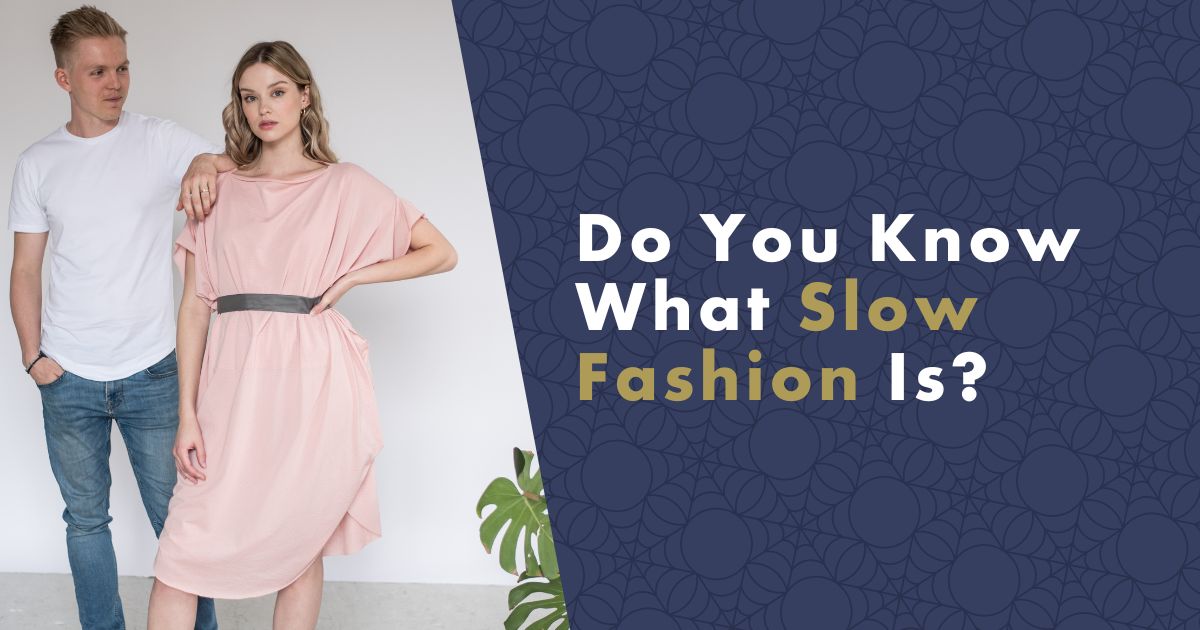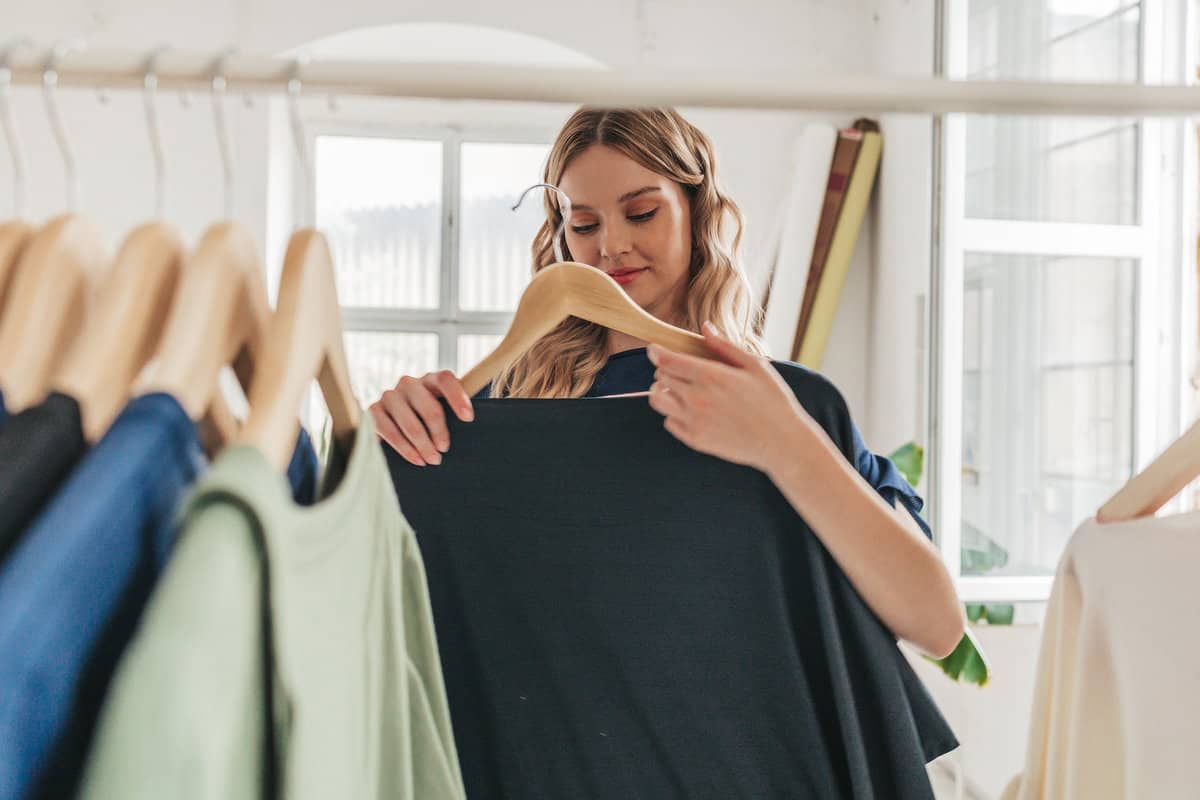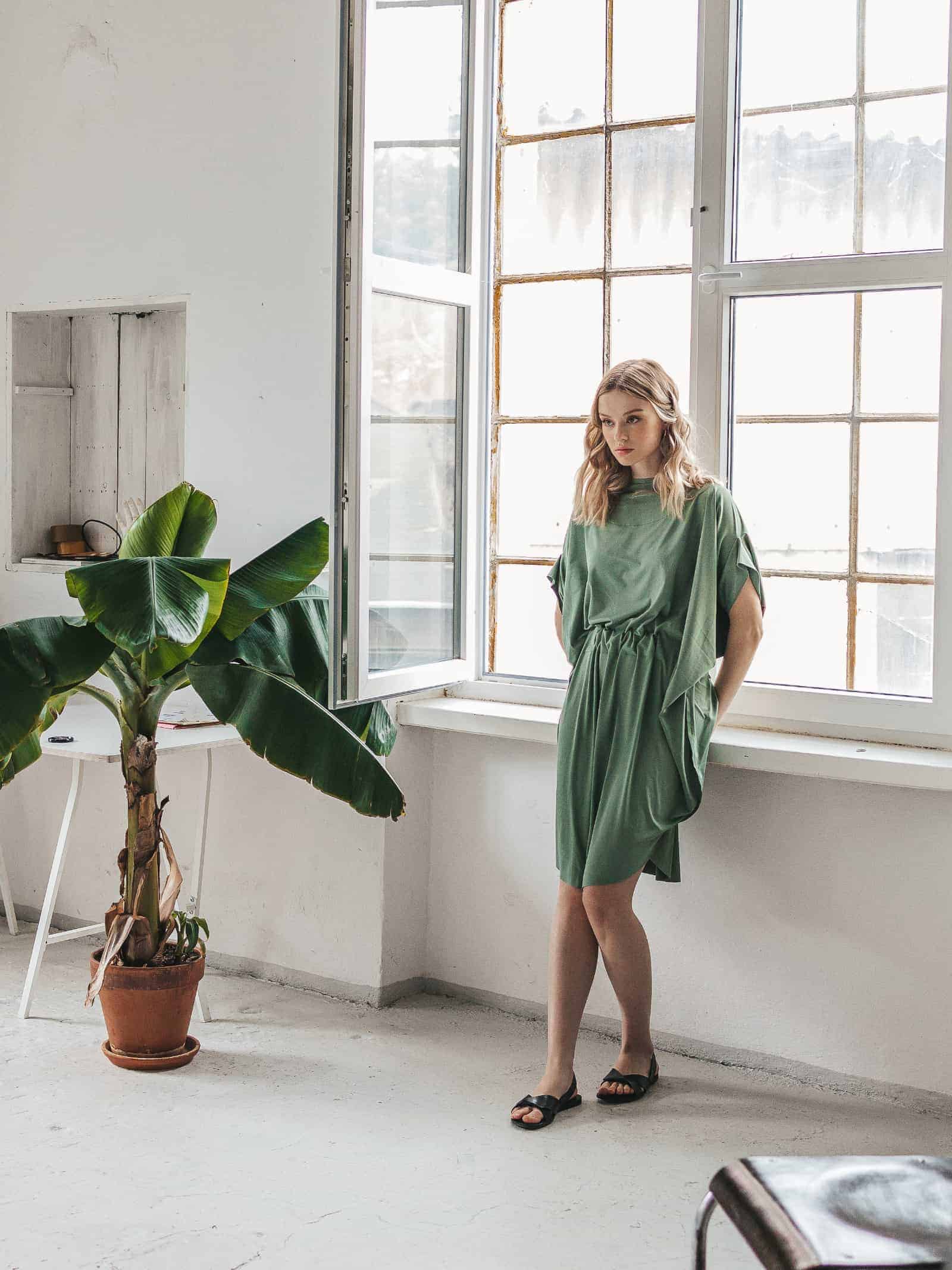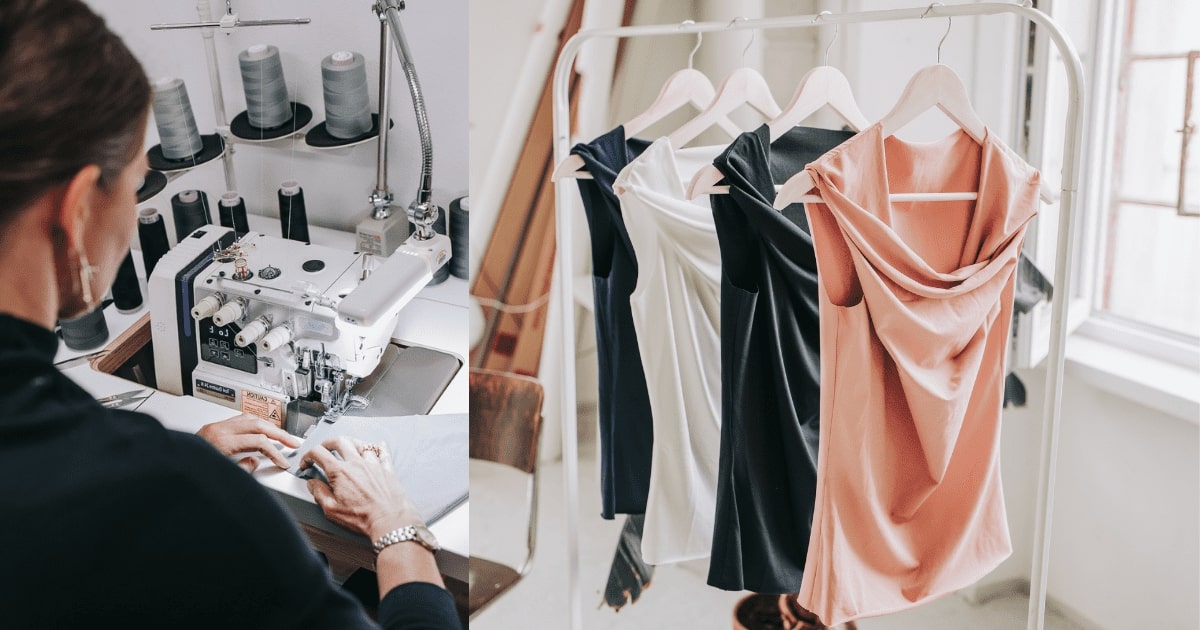There are many terms you will come across in the world of sustainable fashion, and if you are just starting to get interested in how to shop ethically and in harmony with nature, you can easily get lost. That's why we've put together a comprehensive guide to sustainable fashion.

What Is Slow Fashion?
We could simply say that it is the opposite of fast fashion. Fast fashion is a term that describes cheaply made fast-fashion clothing, often involving child labour and environmental exploitation, often made from materials that count on you wearing them just a few times and buying new items for the next season.
Fast fashion is considered to be all those retail chains that come up with new and new collections to cater to the ever-changing trends. In this way, the fashion industry creates a toxic system of an endless cycle of surplus production, and forces people to buy more and more low-quality goods. This plunders nature, encourages child labour, and forces people to spend money on dozens of clothing items every year.
On the contrary, slow fashion focuses on high-quality materials produced under fair conditions and with respect for nature. Slow fashion is ethical and does not use child labour in its production. It is often produced locally to save nature and in terms of logistics.
Slow fashion does not blindly follow trends, but creates pieces of clothing that would have been stylish in the past, are stylish today and will most probably be stylish in a few decades. It creates pieces of clothing that you will keep in your wardrobe for years.
What Is Sustainable Fashion
Sustainable fashion is fashion made with nature in mind, using nature-friendly materials in production. This means how the textile raw material is grown and processed, how durable the fabric itself is when worn and how demanding it is to maintain (washing).
How Much Water Does the Fashion Industry Use?
Water is one of the fashion industry's most painful problems. The fashion industry uses 79 billion cubic meters a year, making it the third largest consumer of water in the world. To put that into perspective, that's the annual water consumption of 110 million people in the world. If the fashion industry continues at its current rate, its water consumption will double by 2030. With fresh water running out, this is a huge burden not only on the planet but also on humanity.
Cotton Textiles as the Fashion Industry’s Biggest Problem
Cotton textiles, which are the third most used fabric in the world, are a major problem. It now takes 10,000 litres of water to produce one kilogram of unprocessed cotton. In addition, 100-150 litres of water are needed to process one kilogram of cotton. Unfortunately, it is not only the water consumption that puts a strain on the environment during cotton production; large quantities of pesticides and chemicals are also used as standard in cotton cultivation. Cotton cultivation accounts for up to 16% of the insecticides used in the world.
Which Materials Are the Most Sustainable?
When selecting materials, it is important to look not only at how the materials are sourced, but also at how much water is used to process them or at the maintenance requirements of the materials themselves.
There are materials with self-cleaning properties, so that even stubborn stains can be washed at low temperatures. Interestingly, there are also materials with antibacterial properties which destroy odours and can therefore be worn for longer.
Linen
Cool in the summer, warm in the winter. It is more durable and resistant than cotton and is antiseptic. According to archaeological findings, linen has been used on the territory of the European since the Stone Age. Unfortunately, it fell into oblivion in the last century. The advantage of linen is that its production requires minimal amounts of water and pesticides.
Organic Hemp
The hemp textile absorbs sweat well, but remains breathable. Overall, hemp fibre has a durability and longevity that surpasses other natural fibres. As with linen, it requires minimal water to produce and is therefore one of the most sustainable natural materials.
Organic Cotton and Recycled Cotton
Cotton is the most widely used textile material in the world and unfortunately it requires large amounts of water and pesticides to produce. In recent years, many farmers have therefore tried to switch to sustainable cotton production without pesticides and other chemicals commonly used to produce cotton. If you are buying cotton clothing, we recommend checking whether it is certified by the Global Organic Textile Standard (GOTS). GOTS ensures that cotton is processed with respect for nature and under fair social conditions.
Tencel (Lyocell)
Tencel is a type of viscose made from crushed wood fibres. Compared to traditional viscose, lyocell is more durable, stronger, very absorbent (50% more absorbent than cotton) and non-creasing. Like linen, it cools in summer and warms in winter. Proper Tencel should not contain any chemicals.
Piñatex
In the European, Piñatex is not yet well known, but it is a vegan alternative to leather made from pineapple leaves.
Econyl
Econyl is yet another recycled material that is very interesting for the clothing industry. This is a type of nylon that is made entirely from waste materials such as fishing nets, carpets and other solid textiles. The production of Econyl is carried out through several chemical and physical processes including depolymerisation, component splitting and polyamide re-generation. As a result, we have a premium eco-friendly polyamide fabric with all the properties of the classic polyamide, nylon.
How Nanotechnology Enriched Materials Help Protect Nature?
Sustainable materials are nanomaterials or nanotechnology enriched common materials that have hydrophobic surface. This prevents dirt from penetrating deep into the structure and achieves an easy-care effect. As a result, only a minimum of water and detergents are required for maintenance.
Are Materials Containing Nanoparticles of Silver Environment Friendly?
Use of nanoparticles in clothing is becoming increasingly popular. The most commonly used nanoparticles are silver nanoparticles with antibacterial and anti-odour effect. Silver nanoparticles in textiles deactivate the bacteria that cause odours when sweating.
Thanks to these properties, clothes with silver nanoparticles do not need to be washed as often and water consumption is reduced. However, there has been a big debate about the release of nanoparticles into the water during washing. Fortunately, there are already materials that have silver nanoparticles firmly anchored in textiles. As a result, they do not wash out and do not lose their properties in the long term. It is also important to note that silver nanoparticles are commonly found in nature.
#produkty#https://www.nanospace.store/dresses/
How to Start Buying Clothes Sustainably?
The most important thing is your general approach to clothing. Everyone wants to dress in style, but what most people don't realise is that dressing in style doesn't mean buying all the clothes that follow the current trend. Having great style means choosing clothes that even if you look at your pictures 20 years from now, you'll say that they looked great. It doesn't mean you shouldn't buy an occasional trendy piece, but they definitely shouldn't form the base of your wardrobe.
1) Create a Capsule Wardrobe
A capsule wardrobe is a wardrobe with a collection of garments that can be combined together to create an outfit for every occasion. Quality materials and cuts that never go out of style are the foundation.
Your wardrobe should contain single-colour basic T-shirts, dark and light trousers (jeans and dress pants), a well-fitting suit or a simple, easy-to-match black dress. A capsule wardrobe includes a trench coat and a leather jacket. White sneakers and dress shoes (pumps, boots or men's half-shoes) are also a part of such wardrobe basics.
2) Invest in High-Quality Clothing
It used to be normal to save up for a good quality coat, dress or shoes. Today, in the flood of consumerism, people no longer appreciate quality goods and find it normal to buy T-shirts for 21 USD or less, which are ruined after one season.
But if you really want to live sustainable, minimalist and stylish way, start looking around for local designers and invest in quality clothing.
You needn't buy ten dresses, t-shirts and pants at once. Quality T-shirts can cost several thousand USD and dresses from European designers can cost up to 500 USD, but they are pieces of clothing that will stay with you. If you have a smaller budget, try looking for dresses that can be tied in several ways. This will give you several outfits at once!
3) Buy Second Hand
A lot of people buy more clothes than they can wear. Thanks to this, you can buy beautiful, almost unworn pieces for a few bucks. You can get them either in second hand shops, or directly from people on Vinted. Second hand goods are perfect when it comes to shopping for trendy pieces to add to your wardrobe.
4) Only Buy What You Actually Need
As recently as 30 years ago, people only bought clothes a few times a year when their old ones ripped or started to feel small. But then something changed and shopping became a sport. Today, people go on trips to Prague or Dresden with a single goal in mind: Shopping. Shopping has become a hobby. Fashion brands feed this hobby with new and new collections and trends, and this not only plunders nature but also encourages child labour.
So, if you want or need to buy clothes, buy wisely and only what you need. Avoid big malls where people normally go for one thing and bring several bags of clothes.
5) Support Local Brands and Local Producers
By buying from local producers, you not only support the European economy, but also reduce the environmental footprint that your goods leave, and you also fight child labour.
What Is Fashion Revolution?
Fashion Revolution is an international initiative that seeks to raise public awareness about how the fashion industry works. The initiative was launched in London in direct response to the collapse of the Bangladeshi garment factory Rana Plaza on 24 April 2013, which killed 1,130 people and injured 2,500 others.
Fashion Revolution's social media hashtags include #whomademyclothes and #imadeyourclothes. The hashtag #whomademyclothes was used mainly in 2016, when 70,000 people around the world demanded global brands to show who made their clothes. They responded with just the hashtag #imadeyourclothes.
#produkty#https://www.nanospace.store/search/?string=t+shirt/




